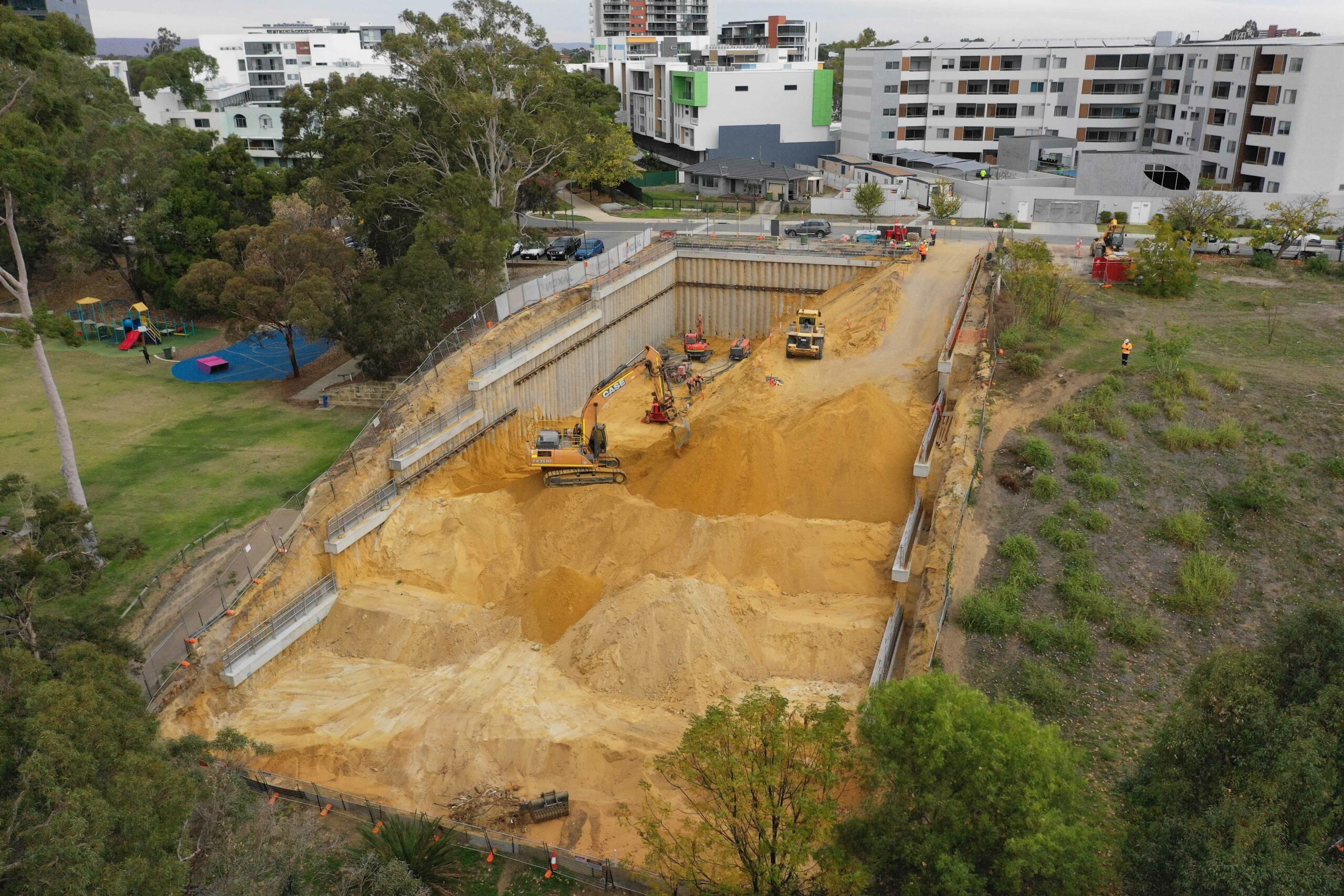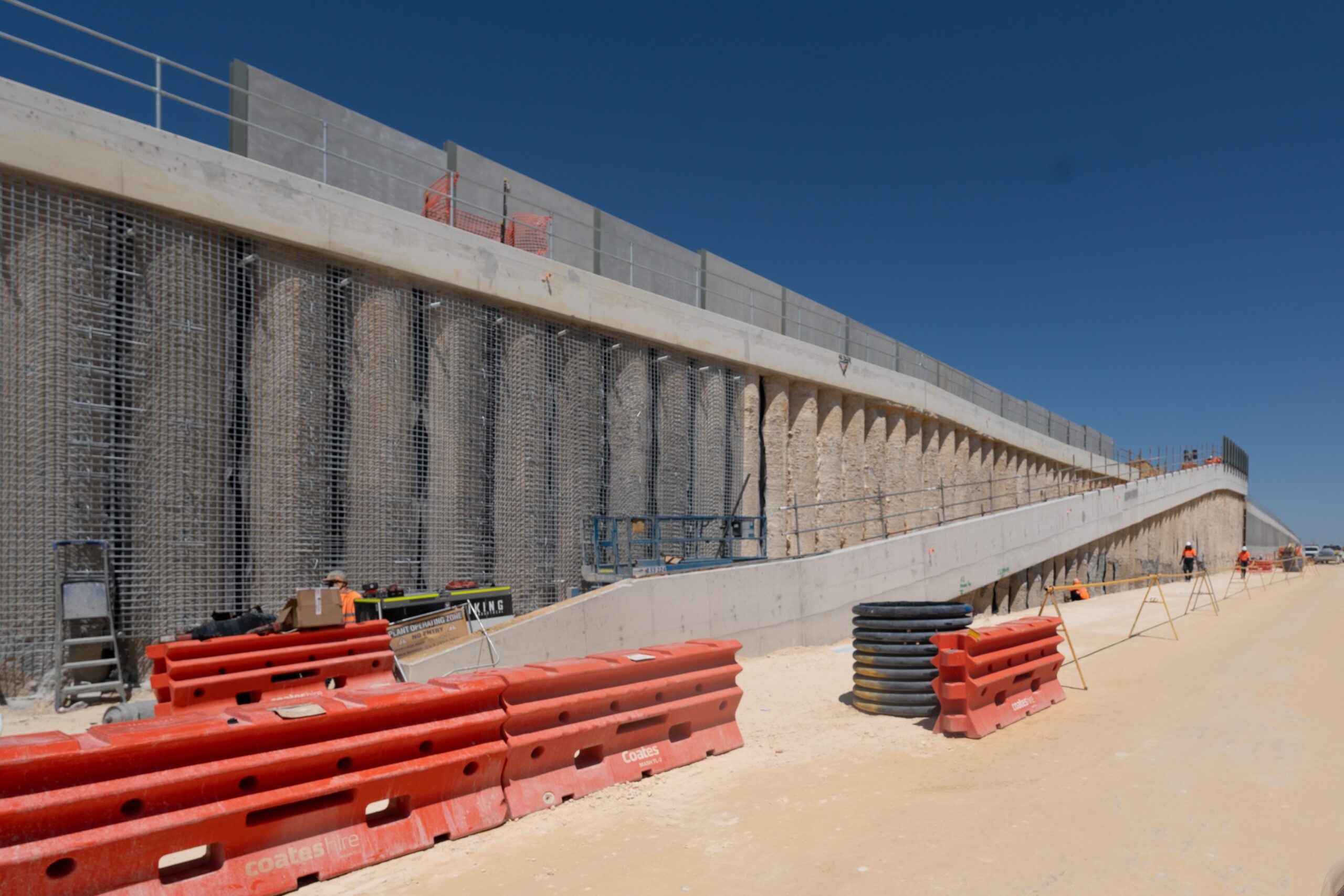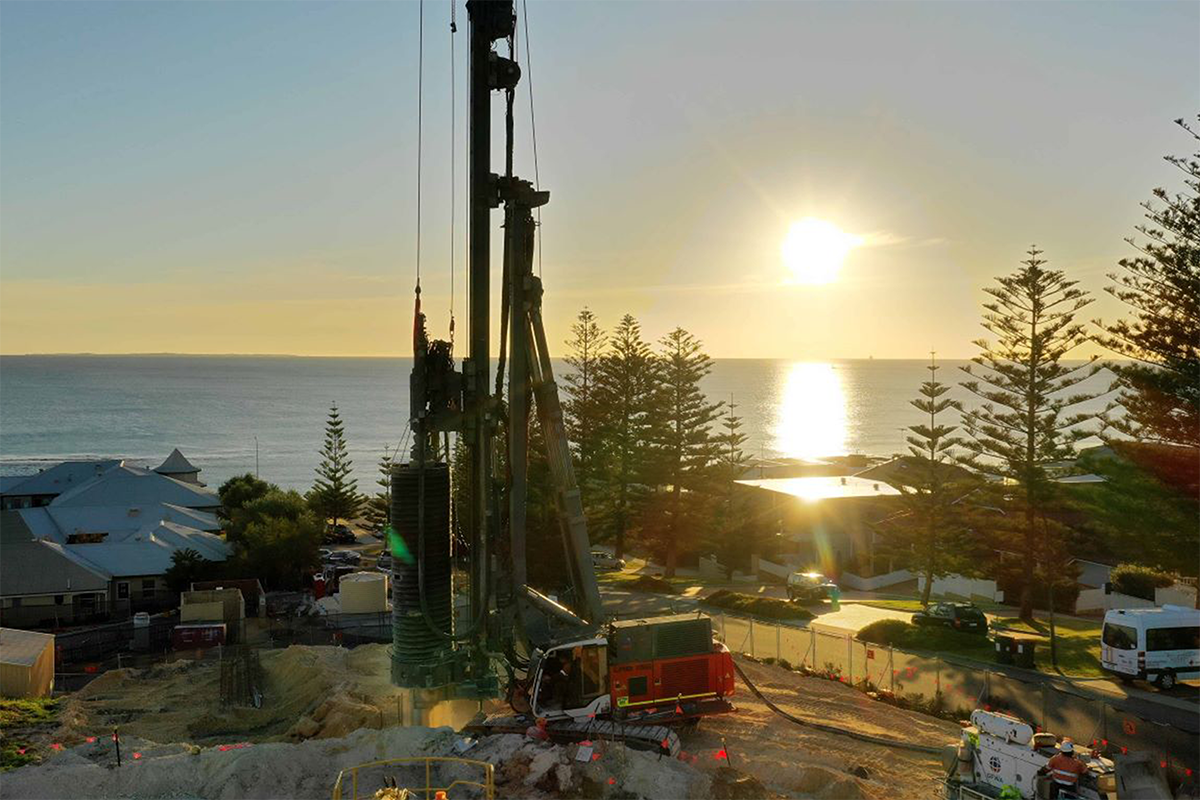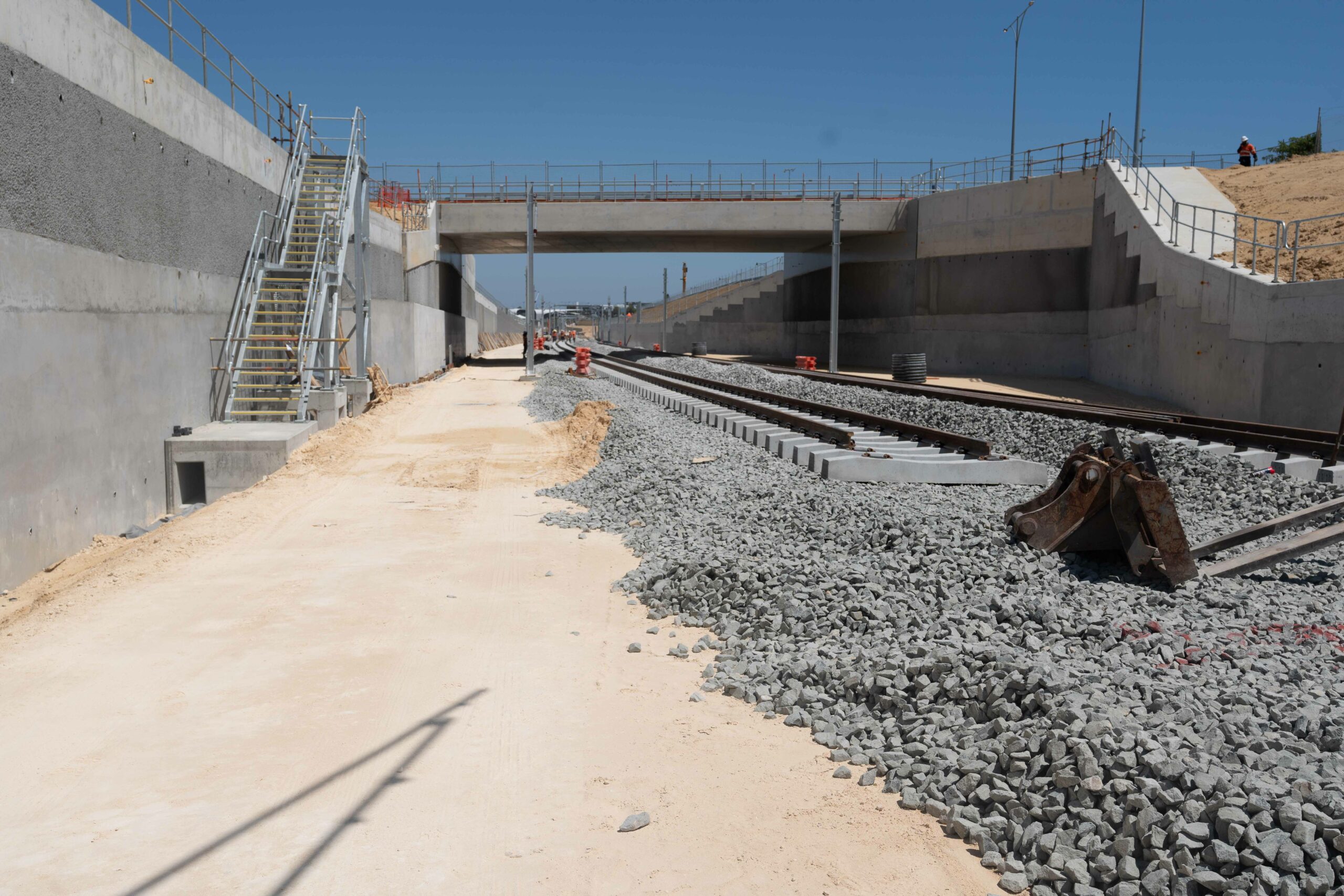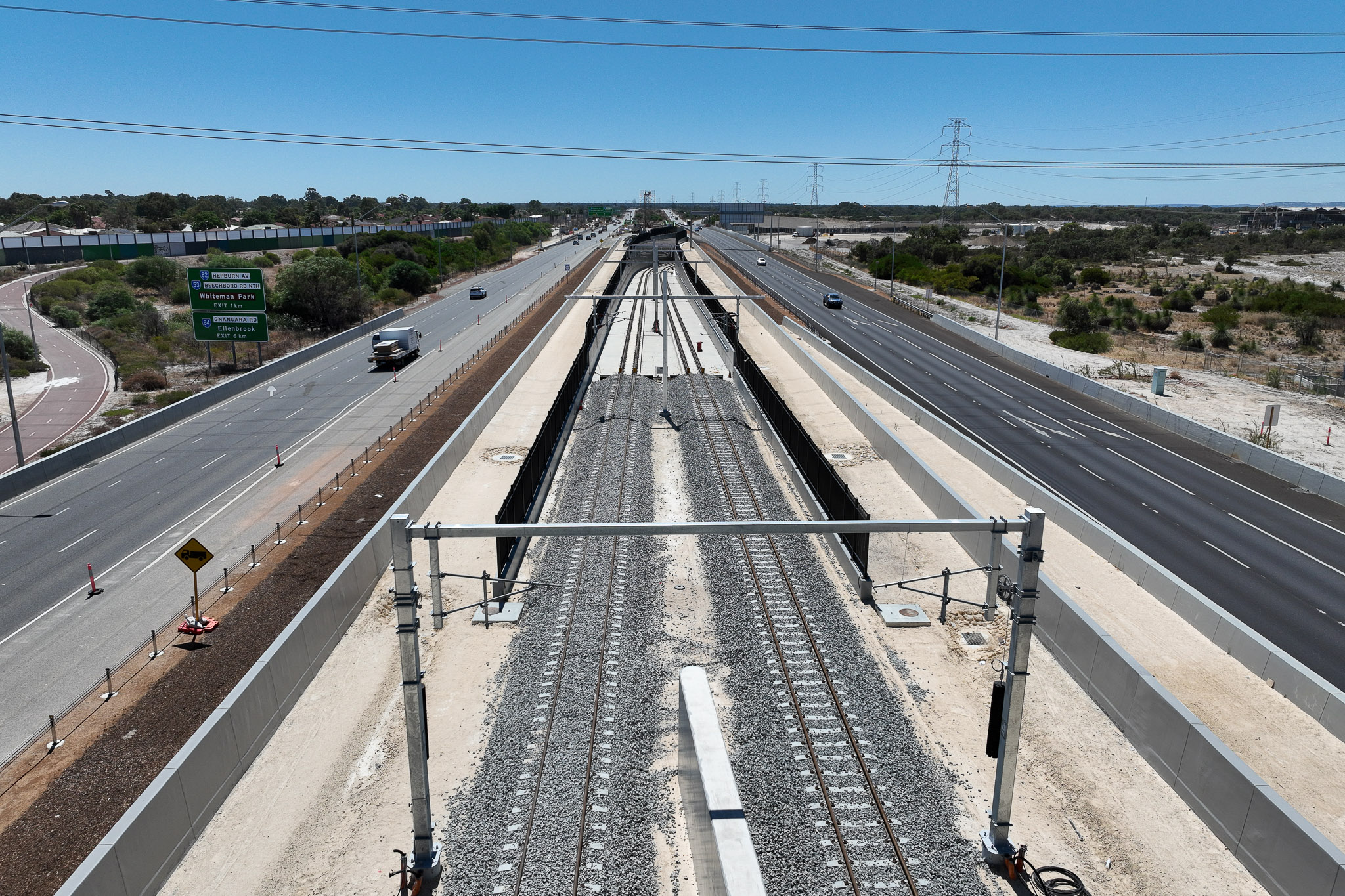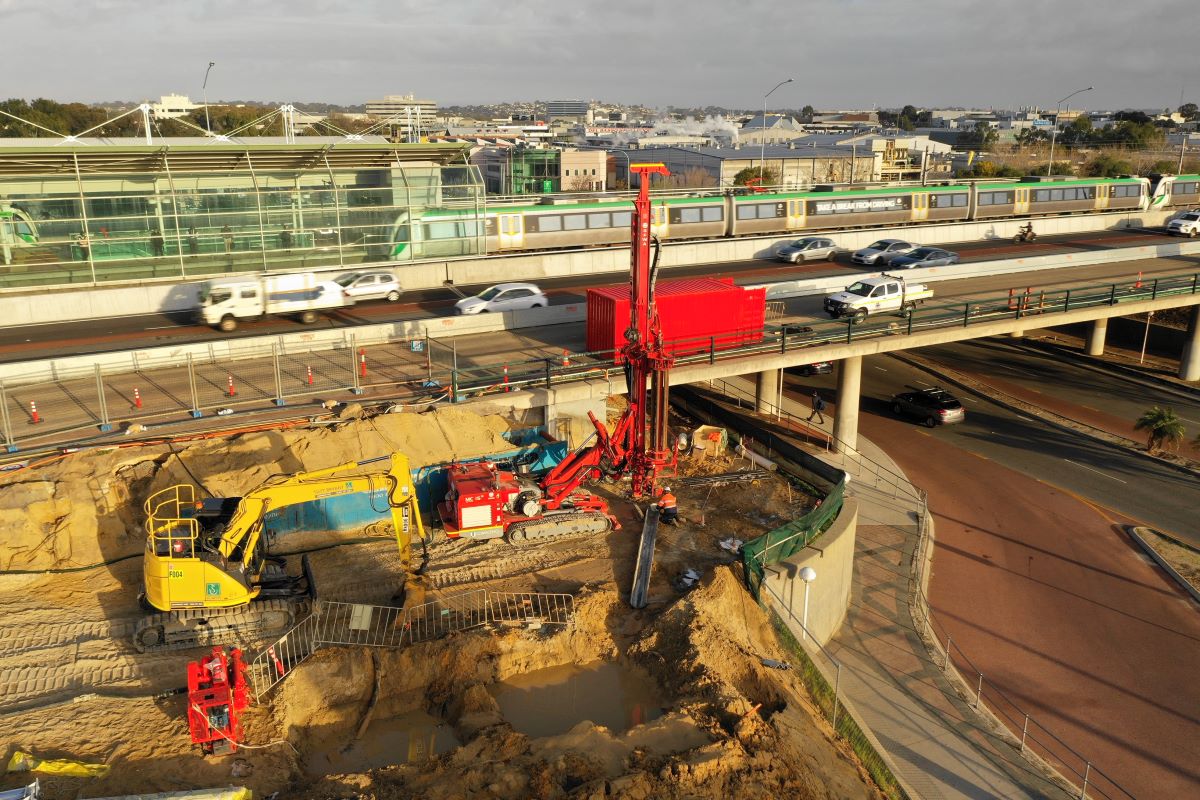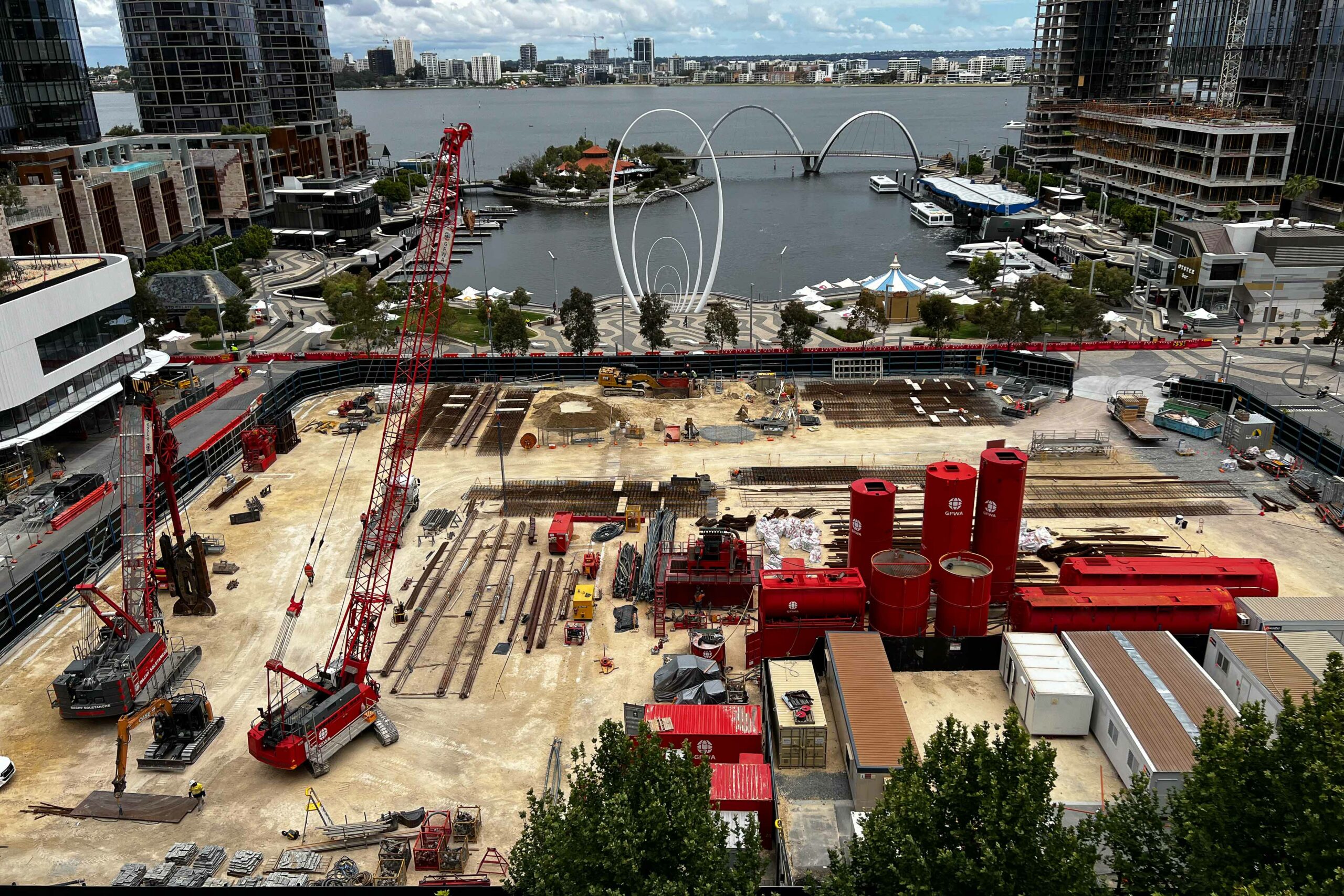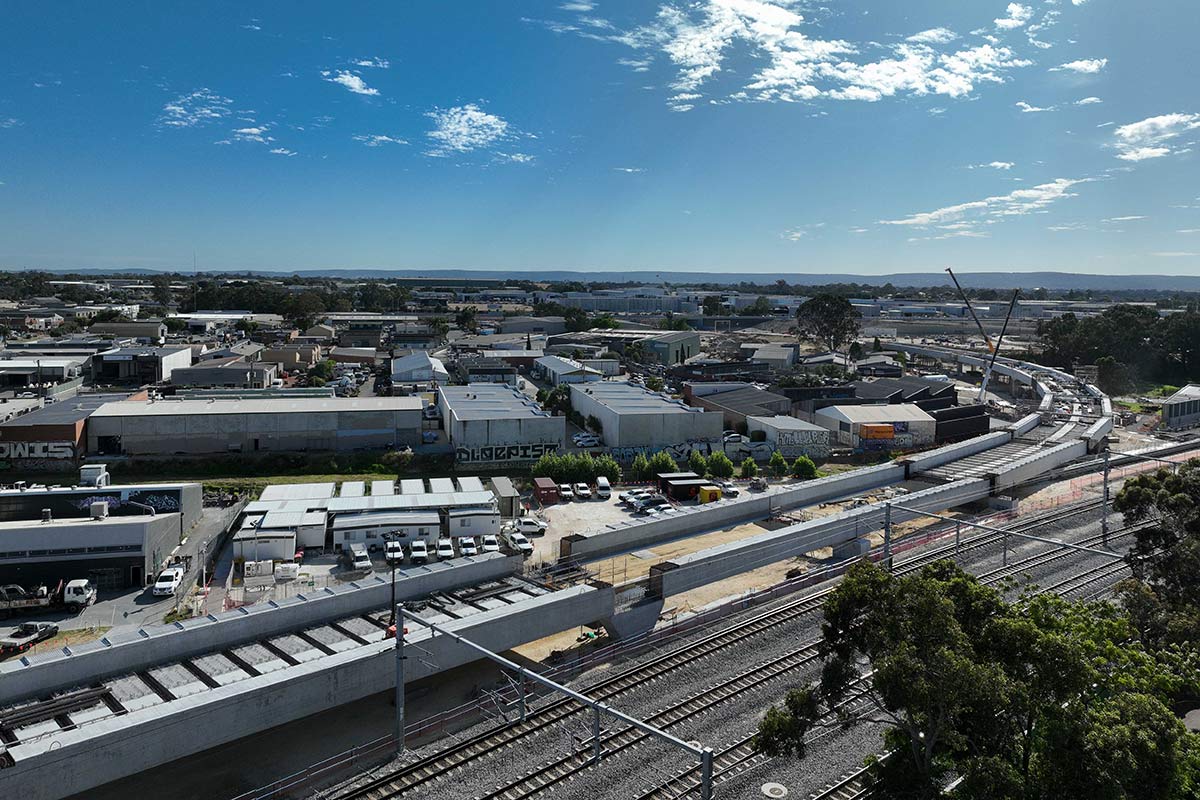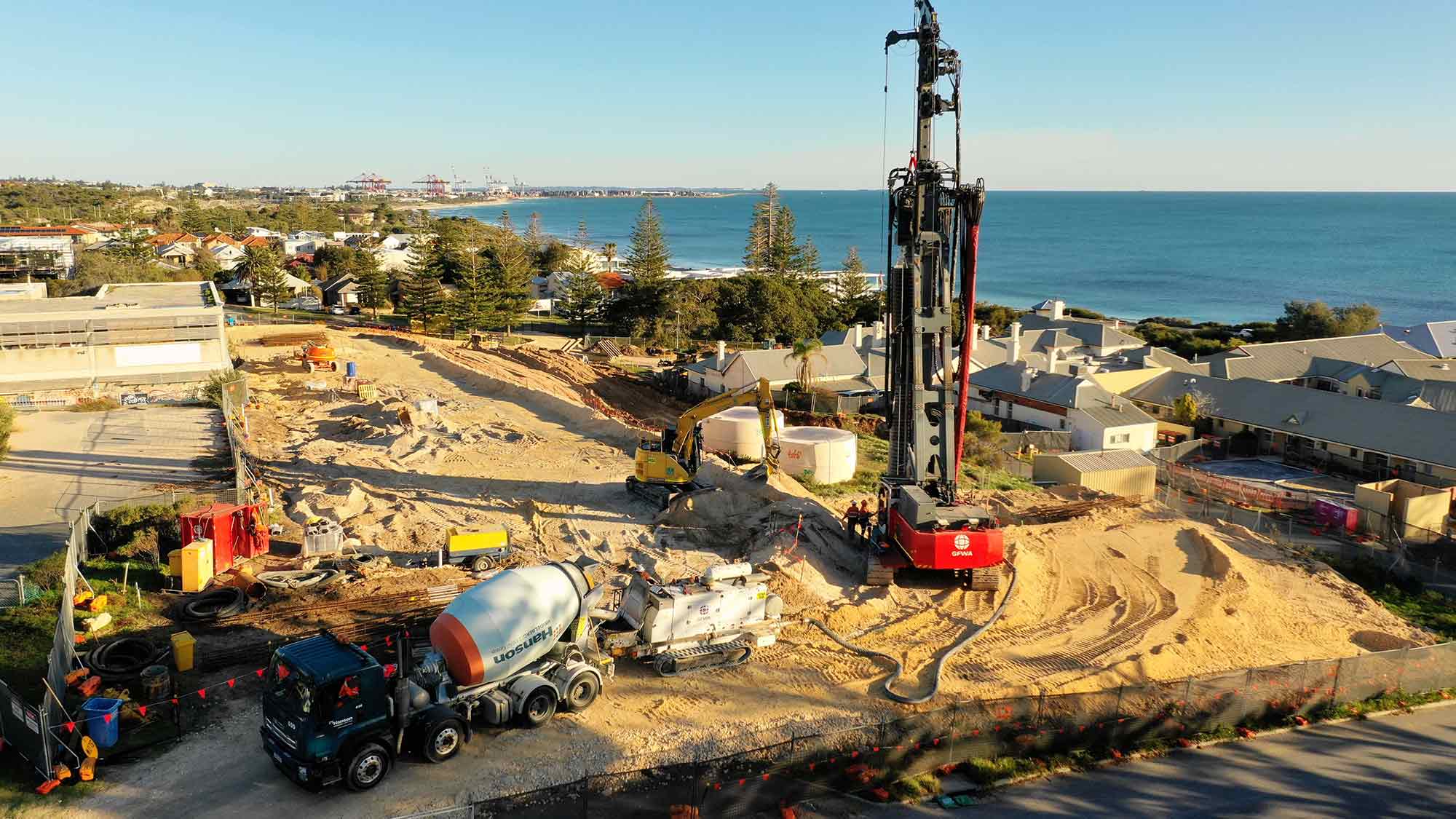Project Description
Contiguous Pile Wall Construction for Effective Earth Retention
GFWA is an expert in contiguous pile walls and has done numerous projects within Australia.
Contiguous pile walls are crucial in construction for efficient and cost-effective earth retention. Closely spaced CFA/ bored piles provide stability during excavation, supporting foundations and preventing soil movement, ensuring structural integrity in urban projects.
Our processes
Contiguous piled walls consist of closely spaced CFA/bored, minimising the gap between them to 50-150mm. This configuration effectively retains soil before excavating in front of the wall. Ideal for challenging soil conditions or when higher structural capacities and limited deflections are crucial.
Stage 1: Site Preparation
The construction site is cleared of any obstacles, and the alignment for the contiguous wall is marked. Guide walls or templates may be installed to ensure precise positioning of the bored piles. The site preparation ensures that the area is ready for the arrival of drilling equipment and materials.
Stage 2: Bored Pile Drilling
A series of closely spaced holes are drilled along the wall alignment using a piling rig. The spacing between the piles is critical, typically less than the diameter of the piles, to ensure that they form a continuous barrier. The drilling depth is determined by the design requirements and soil conditions. Drilling is performed with precision to ensure that each pile is properly positioned.
Stage 3: Reinforcement Installation
Steel reinforcement cages are placed into each drilled hole. The cages consist of vertical and horizontal steel bars tied together to form a rigid structure. The reinforcement provides the necessary structural strength to the piles, enabling them to withstand lateral earth pressures and other forces.
Stage 4: Concrete Pouring
Concrete is poured into the drilled holes to form the piles. The concrete must be of high quality and placed carefully to ensure it completely fills the holes and surrounds the reinforcement cages. Tremie pipes may be used to place the concrete from the bottom up, preventing segregation and ensuring a solid, continuous pile.
Stage 5: Soil Excavation
Once the concrete has cured, soil is excavated between the piles to the required depth for the structure. The piles form a continuous wall that supports the excavation and prevents soil collapse. The excavation process must be carefully managed to avoid disturbing the integrity of the piles.
Stage 6: Finishing
A smooth finish is applied to the wall surface if necessary. This may involve the application of shotcrete or additional concrete facing to provide a uniform appearance and additional structural support. The finishing process also includes cleaning and preparing the wall for any additional construction activities.
Stage 7: Quality Control
The contiguous wall is inspected for alignment, strength, and structural integrity. Non-destructive testing methods such as ultrasonic testing or integrity testing may be used to assess the quality of the concrete and reinforcement. The wall must meet all design and safety standards before it can be approved for use.
Related projects

